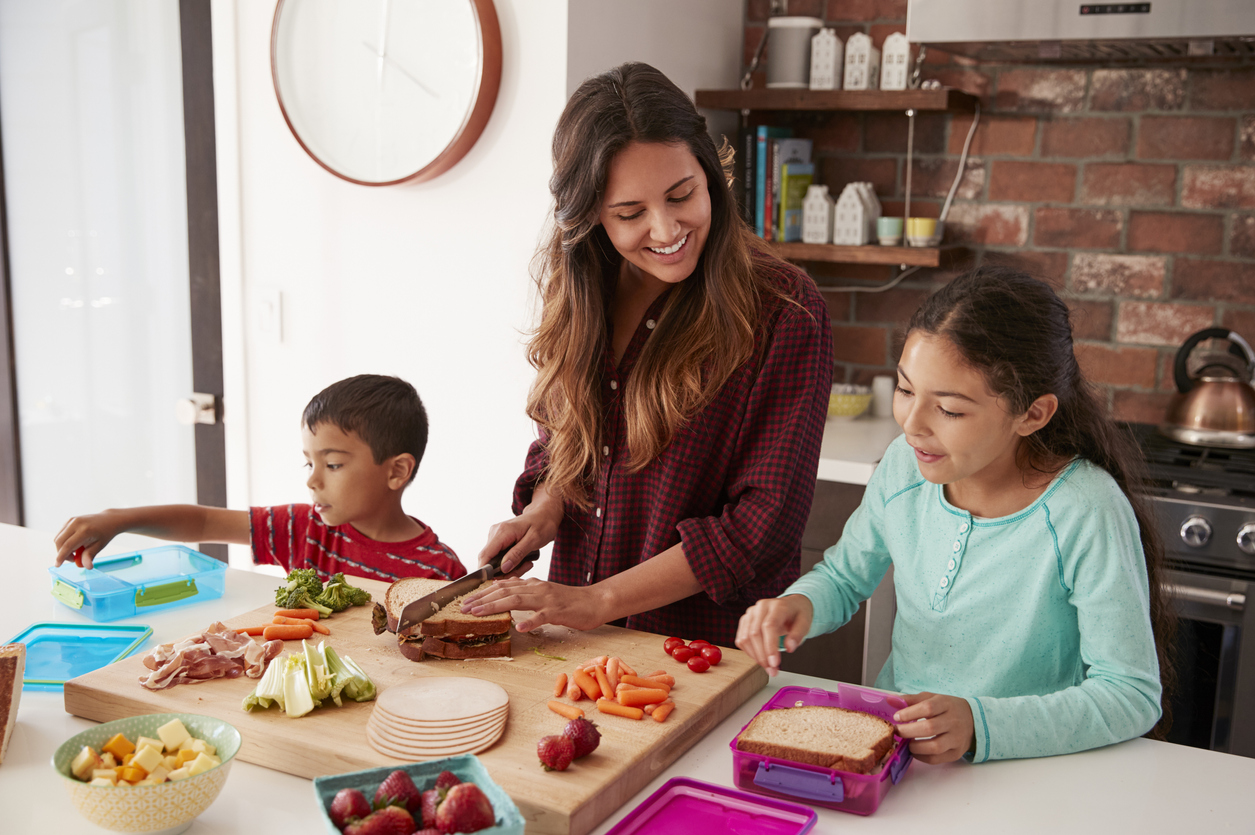Avoiding Food Fatigue in School Lunches
With kids back in school, you might be looking for ways to mix up school lunches. For parents or caregivers of children with autism, this might be a challenging task. Picky eating, problem eating, or food selectivity are fairly common behavioral traits exhibited by autistic individuals.
In fact, a 2019 study conducted by psychiatrist Susan D. Mayes found that, “atypical eating behaviors were found in 70.4% of children with autism”. Keep reading as we discuss how food fatigue can lead to a food jag, and how you can help your child be successful at lunchtime.
Autism and Food Selectivity
Food selectivity is a fairly common challenge that parents of autistic children endure. Often, selective food tendencies stem from sensory challenges such as sensitivities to texture, taste, and smell.
In response to these sensitivities, your child may decide that some foods are ‘safe’ to eat while others feel ‘unsafe’ to try. Food for which kids can tolerate the taste, texture, and smell are ‘safe’ foods. For example, chicken nuggets and french fries are common ‘safe’ foods for autistic children. However, blueberries may feel ‘unsafe’ because they can vary in color, texture, and taste.
There can be varying levels of severity when it comes to food selectivity. Some children with food selectivity tendencies like the consistency of, say, chicken nuggets from McDonalds because they look, feel, and taste the same every time. For some kids, chicken nuggets and french fries can ONLY be considered ‘safe’ if they come packaged in a McDonalds bag, while others are satisfied with frozen chicken nuggets and fries from their freezer.
What is Food Fatigue?
Food fatigue occurs when you eat the same foods too frequently without breaks and eventually, your body does not want to eat them anymore. You might notice that a previously favorited granola bar is making its way home from school lunches everyday. This could be because your child is experiencing food fatigue and is tired of eating that particular snack.
As the term might suggest, food fatigue is becoming uninterested, tired or bored of eating the same items time and time again. For example, your child might typically love Kraft Macaroni ‘n Cheese and eat it most days of the week for lunch and dinner. You might notice after some time that they are pushing their food around, not finishing their meal, or avoiding consumption.
If Mac ‘n Cheese was previously a preferred or ‘safe’ food, you might feel confused as to why your child is no longer interested in eating something they love. In this case, consider taking a break from Mac ‘n Cheese and switching meals to another ‘safe’ food, or if they’re adventurous, try something new!

What is a Food Jag?
Without intervention, food fatigue can lead to a more serious condition called a food jag. A food jag happens when a child will no longer eat a previously preferred food, even after a sufficient break from eating it.
This can be detrimental to a child who consumes less than 10 foods and/or only eats specific types of foods, because once a food jag is developed they will no longer consume this item and their diet becomes even more limited.
Following our Mac ‘n Cheese example, if you were to continue serving this meal to your child through signs of food fatigue, they might eventually get to a point where their body no longer wants to consume it and they stop eating Mac ‘n Cheese indefinitely.
Intervening at the food fatigue stage can help your child avoid hitting a food jag with a favorite food item.
Try to practice the following tips to avoid food fatigue in school lunches.
Tips for Avoiding Food Fatigue
While it’s both easy and convenient to buy in bulk and stock up for school lunches, the repetition of eating the same items can lead to food fatigue after a while. If your child is struggling with food fatigue, here are some quick tips on how you can avoid this in school lunches.
- Bring kids grocery shopping and allow them to choose their own snacks for the week
- Offer kids two options when packing a lunch to give them control
- Do you want an apple or a banana?
- Get your child involved in packing their own lunch
- Exposing your child to new food through touch and sight
- Don’t pack the same thing everyday
- Get creative with how your child’s favorite foods are presented

Tips for Expanding your child’s food repertoire
If your child exhibits food selectivity tendencies, there are a few things you can do to gently push their comfort zones to expand their food repertoires. As a parent or caregiver, it might be helpful to engage in some food exploration with your child to better understand what they consider to be safe foods, safe textures, or safe colors. Here are some other things you might try…
- Try cutting sandwiches in new shapes
- Avoid giving your child milk before a meal
- Explore different brands of the same snack
- Ex. Cheetos, Cheeto Puffs, Trader Joe’s Baked Cheese Crunchies, Cheese Balls, Pirate’s Booty
- Avoiding using words like ‘yucky’ and ‘yummy’ to describe new foods
- Instead try saying things like ‘that was a BIG taste’
- Get messy, play with food and explore through touch without the pressure to “take a bite”
How MeBe can Help
Don’t get trapped on auto-pilot while making those school lunches. Use some of these tips the next time you pack a lunch and see how your kiddo responds. Always be open to listening to feedback from your child. Food fatigue tends to be silent, so inquiring about how your child liked or disliked their lunch can help you make necessary changes in the future.
If you notice that your child is exhibiting some problematic eating tendencies and behavioral issues at dinnertime like crying or avoiding food, give MeBe a call to see if one of our Speech and Language Pathologists or Occupational Therapists can help.
Learn more about MeBe
If you’re ready to learn more about Occupational Therapy, Speech and Language Pathology, Feeding Therapy, or Applied Behavior Analysis services at MeBe, contact us today.
For helpful tips from the MeBe therapy team, check out @mebefamily on Instagram and Facebook and visit the MeBe Family YouTube channel.

